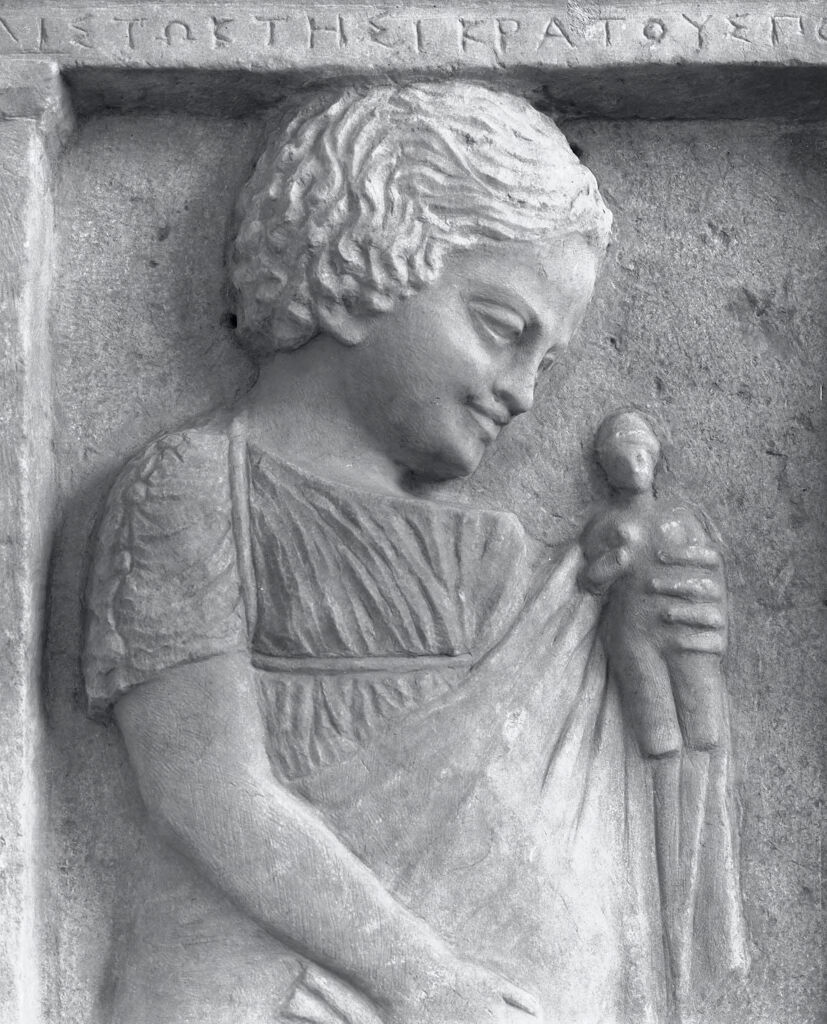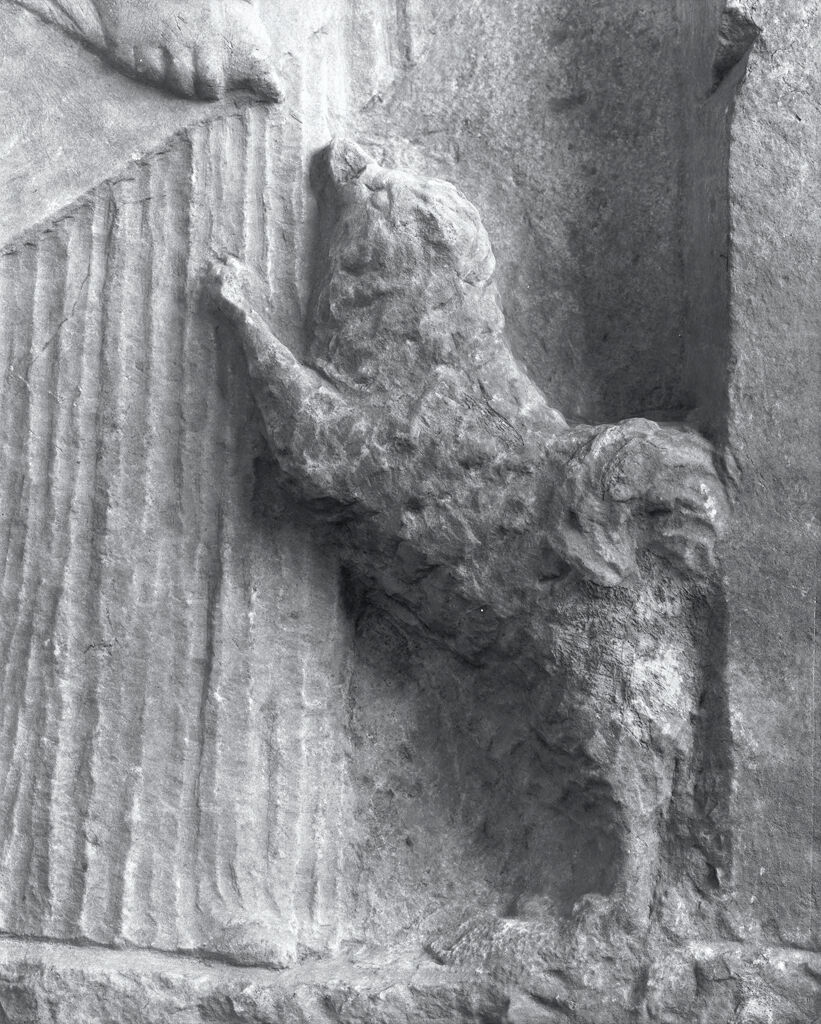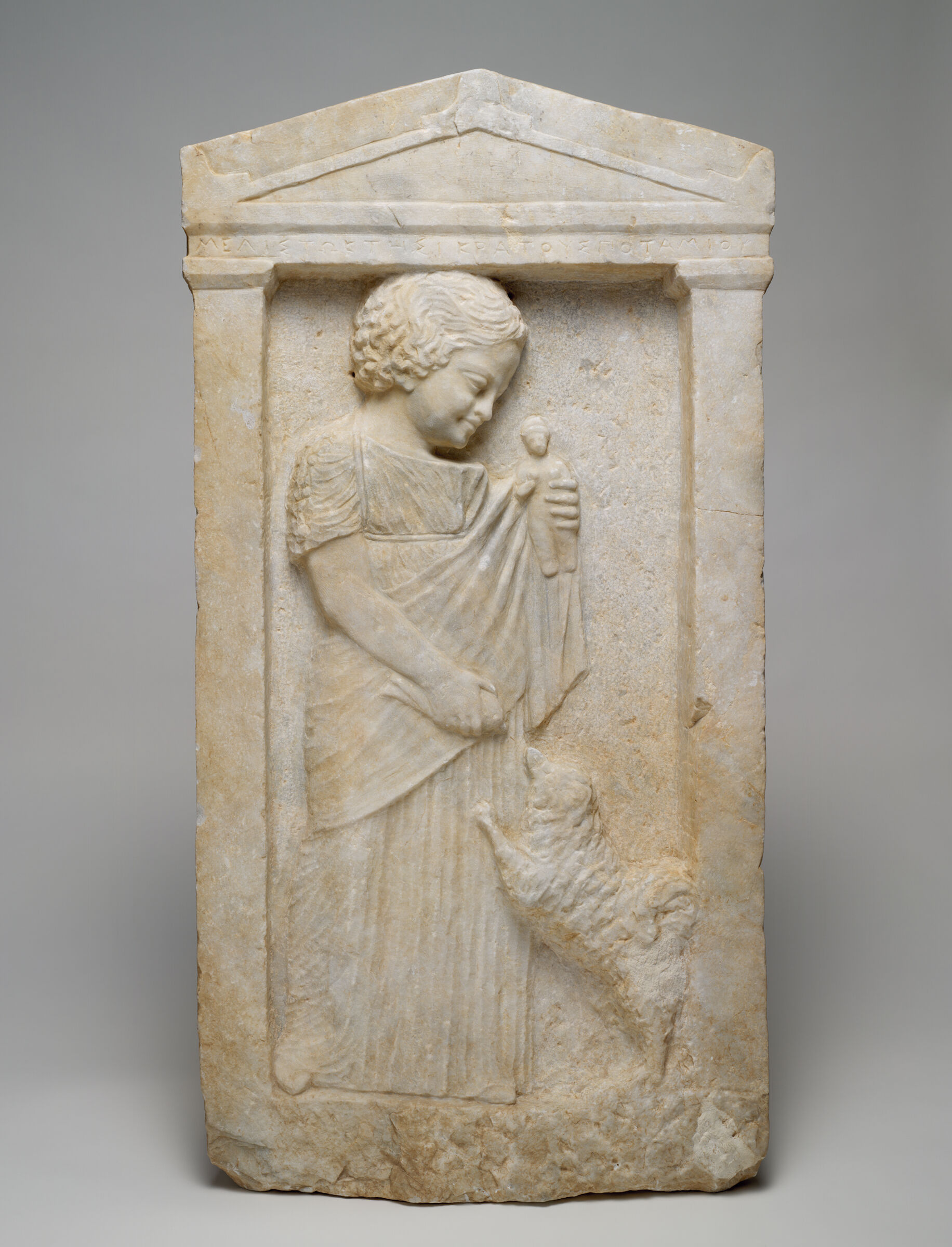Whether they are shown as stiff little adults or more realistically, children in ancient art (especially in funerary art) are a tricky thing for us modern viewers. Somehow there is an immediate, visceral awareness that they have long since passed away – obvious, but not always such a gut-punch when looking at their grown-up counterparts. This is one of the finest and most poignant examples (in my eyes), hailing from 4th century B.C. Attica and currently in the Harvard Art Museums.

The little girl, Melisto, is named by inscription, and her representation is full of age ‘signifiers.’ The more culturally coded of these are her costume, miniature and vaguely adult, but with the chiton girt high up beneath her non-existent bosom; her hair is curly and short and gathered at the front in a central braid, meaning she never reached puberty. (Likely the two drilled holes around her coiffure mean a small wreath in added metal were once attached). Her somewhat chubby cheeks, snubbed nose, and vaguely mischievous smile are more universal indicators.



Most remarkably, she has a little doll clutched in one hand and a bird in the other, evidently to tease the small dog (enthusiastically referred to as a Maltese by the immortal David Gordon Mitten) who jumps inquisitively at her knees. In a period where impassive impressions and quiet gestures were the norm, and the figures remote, this sculptor has made Melisto so very human and relatable.




